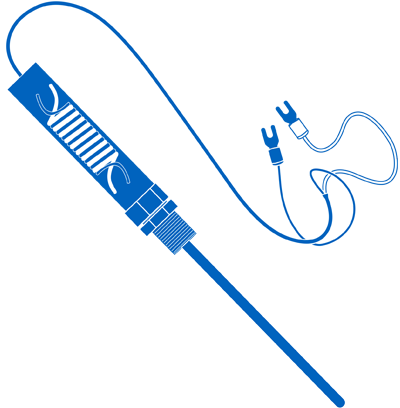Electronics Troubleshooting Review
Objective: Lists steps and procedures for basic measurement and fault finding
Activities: Measure frequency and duty cycle of Caterpillar throttle position sensors and other PWM sensors
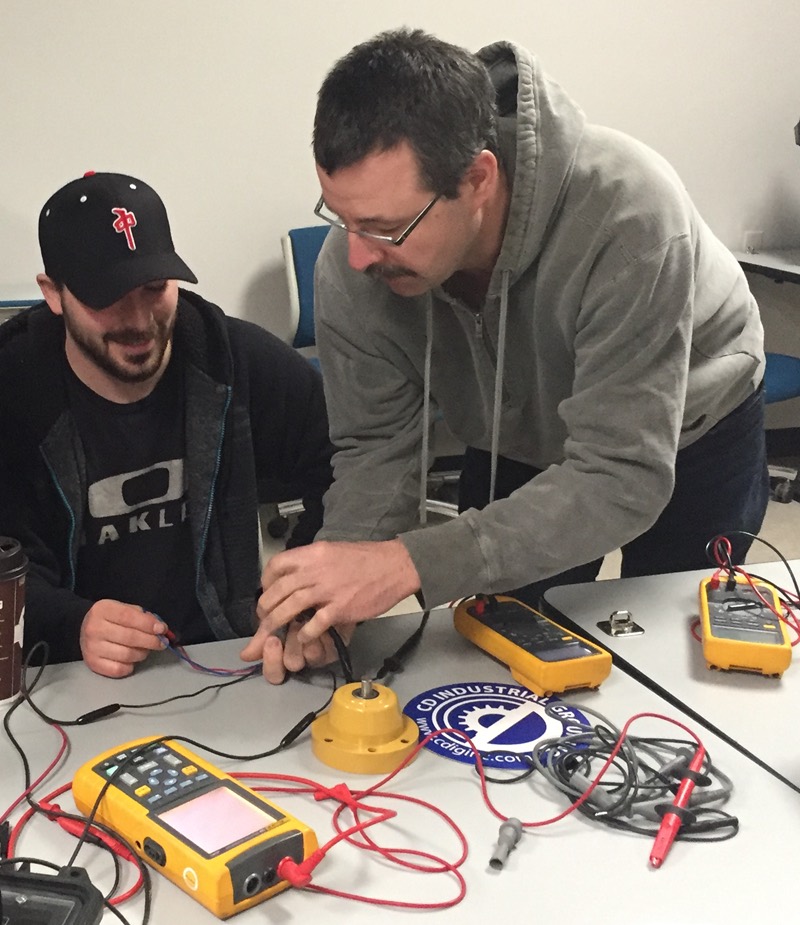
Review your basic fault finding and make meter measurements
Sensors and Transducers
Objective: Describe the operating principles of typical electrical and electronic devices and components
Activities: Test, calibrate and set a pressure switches/transducer, load cell, magnetic pickup and optical encoder
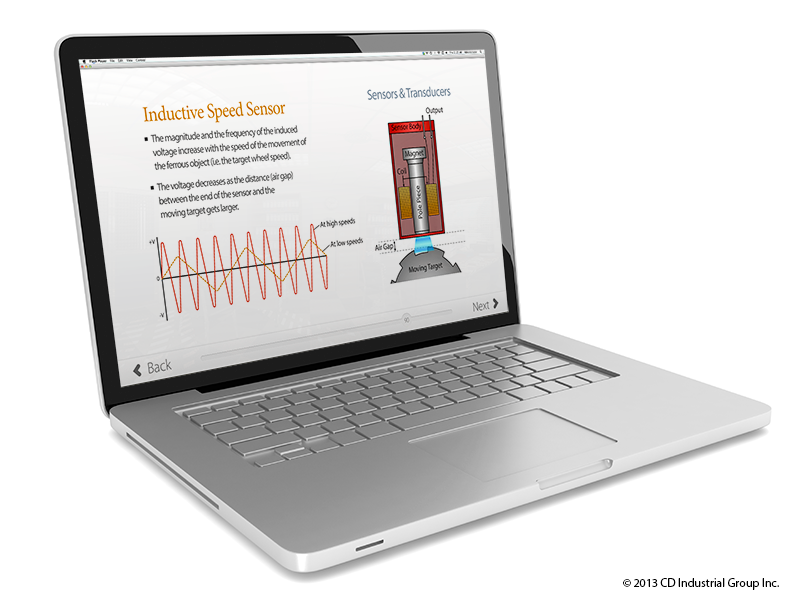
Know your sinking and sourcing and mobile equipment sensor wiring
Hall Effect Sensors
Objective: Describe the Hall effect and its typical application on machinery
Activities: Measure the waveform at high speed to determine output signal integrity
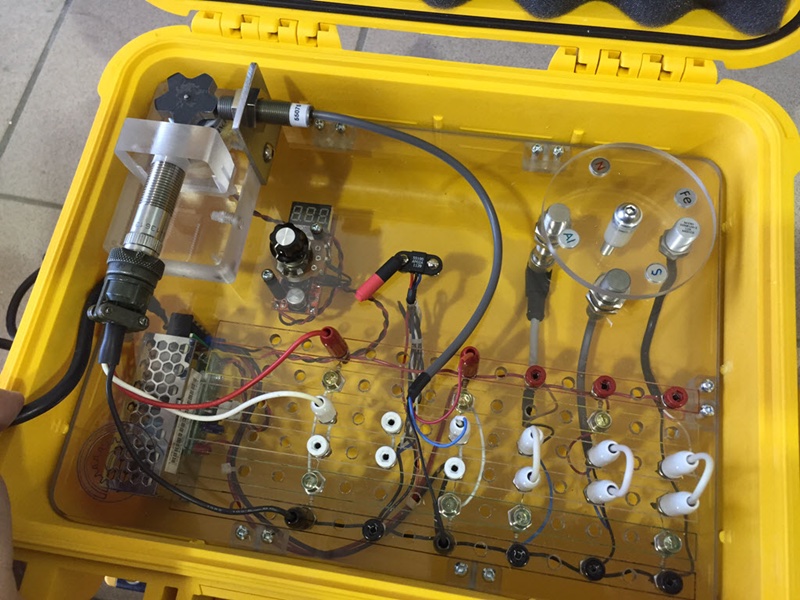
Test various Hall effect sensors with iron, aluminum, north and south pole magnets
Proximity Sensors
Objective: Explain the operating principles of proximity sensors
Activities: Differentiate between nine different models, by range, types of materials detected, electrical characteristics
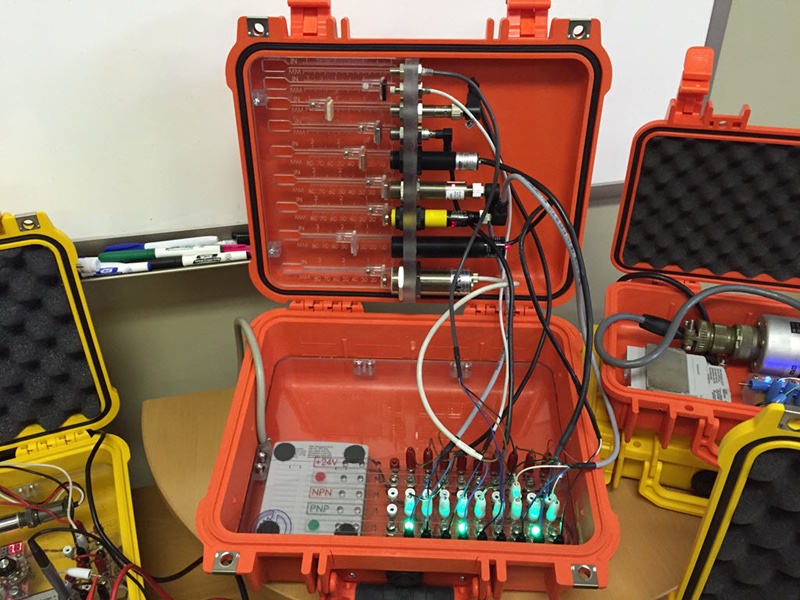
Learn to wire proximity sensors correctly, connecting loads to PNP or NPN outputs
Magnetic Pickups
Objective: Describe the principles of magnetic pickups sensors
Activities: Different between unpowered and powered models
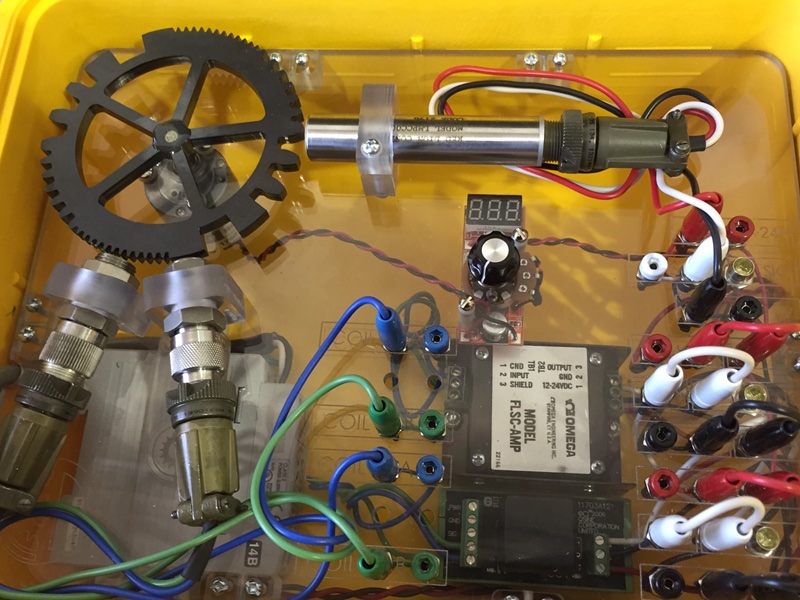
Scopemeter measure the performance of low speed and high speed, 2-wire pickups, connected to amplifiers, and also a self-powered and self-amplified model
Pressure Transducers and Transmitters
Objective: Describe the function of pressure transducers
Activities: Determine voltage or current output of sensors
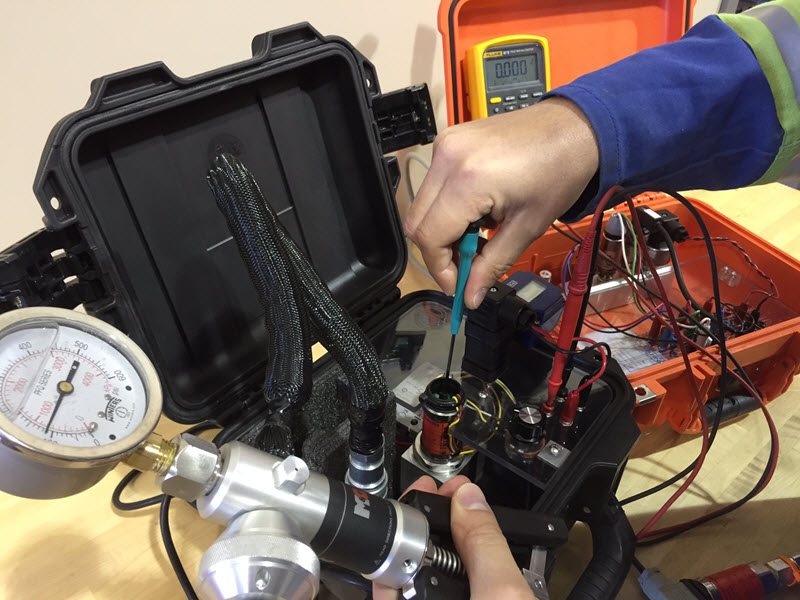
Use a multimeter and hand pump to set "Zero" and "Span" on a two-wire pressure transmitter
Rotary Optical Encoders
Objective: Explain position sensor technologies
Activities: Troubleshoot and measure output signals of rotary encoders
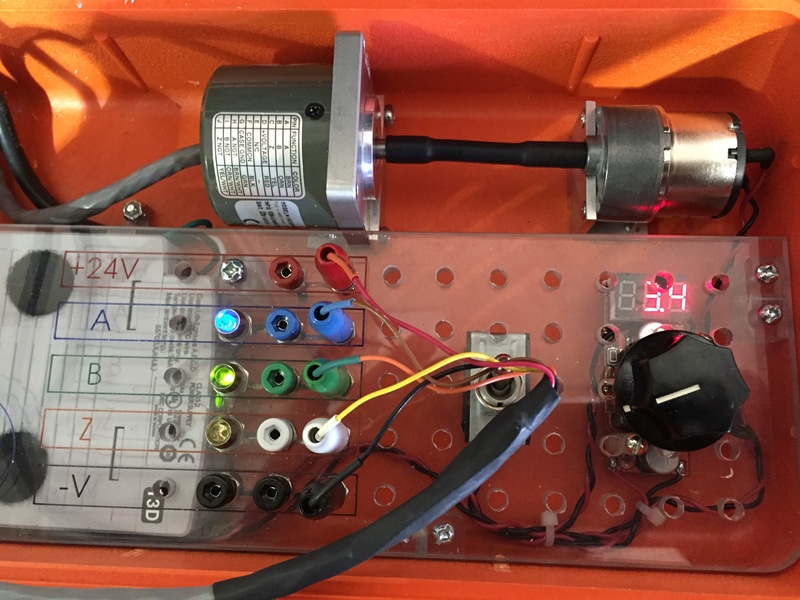
Differentiate an absolute from an incremental encoder
Temperature Transmitters
Objective: Differentiate between RTDs, thermocouples and thermistors
Activities: Explain negative and positive temperature coefficient
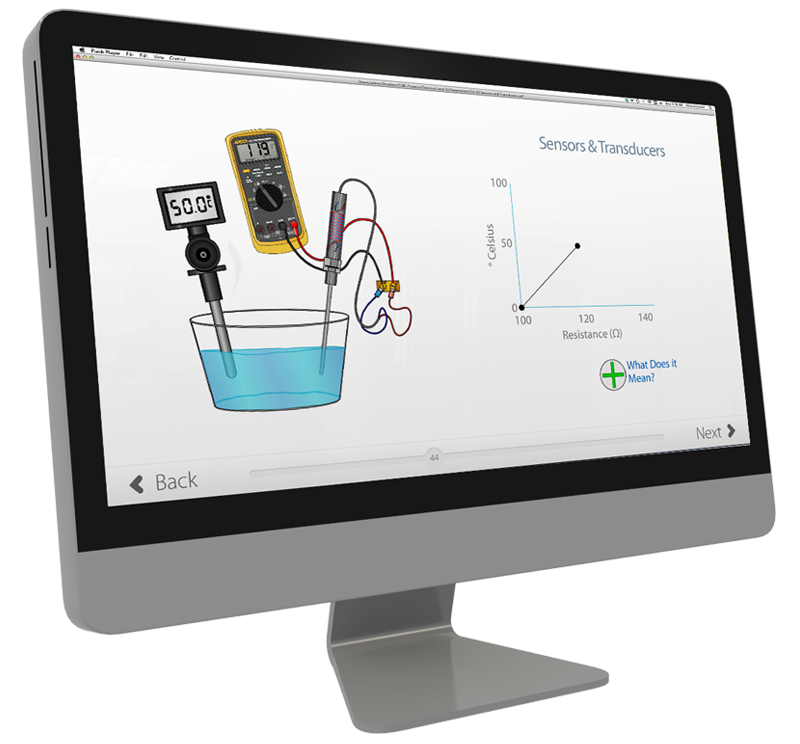
Know your RTD and Thermocouple types and how they are wired
Temperature Transmitters
Objective: Differentiate between RTDs and thermocouples and explain transmitter function
Activities: Calibrate RTD and thermocouple transmitters
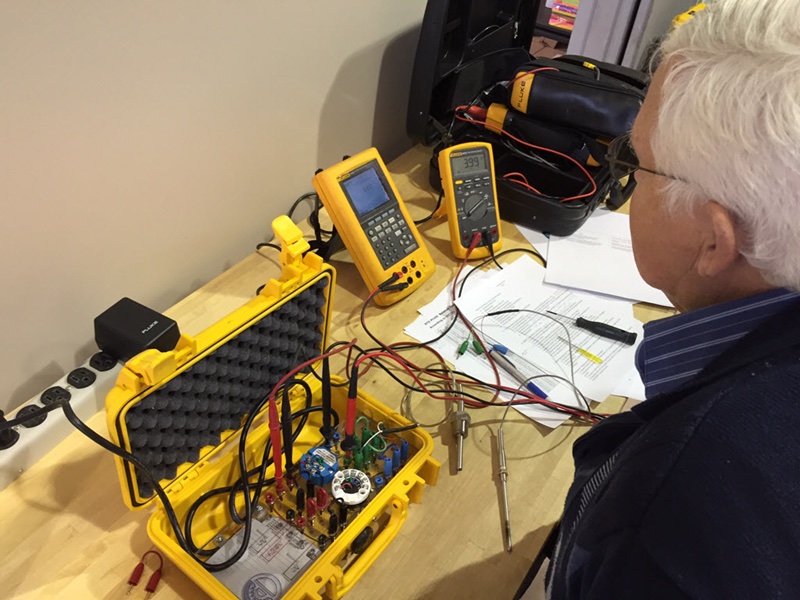
Use a process calibrator and reference tables to calibrate temperature transmitters
Load Cells
Objective: Explain load cell circuit fundamentals: strain gauge, Wheatstone bridge
Activities: Calibrate a load cell transmitter
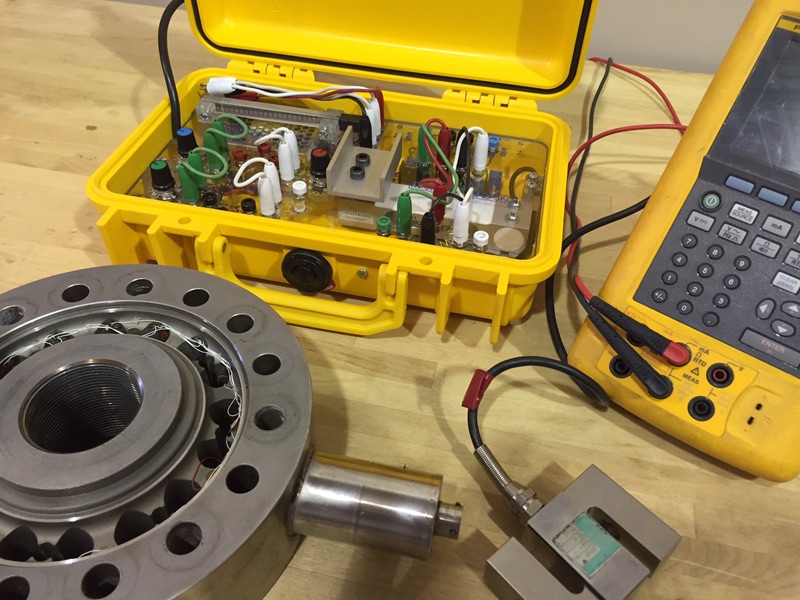
Manipulate the branch resistances in a Wheatstone bridge
Introduction to Process Control
Objective: Explain the purpose of process control
Activities: Valve control simulation activity
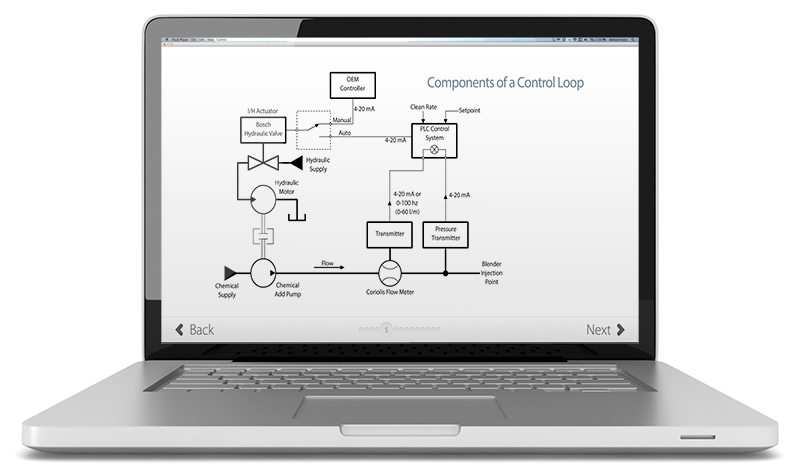
Know your process control terms cold
Control Loops
Objective: Define components and terms used in control loops
Activity: Configure and tune a basic closed control loop
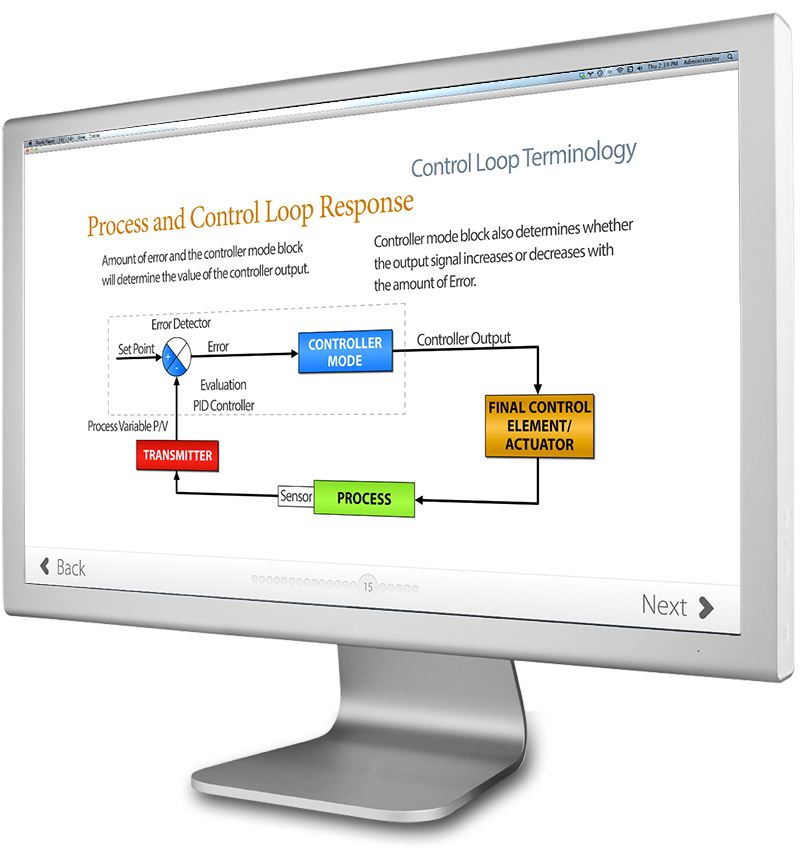
Know your closed, control loops

